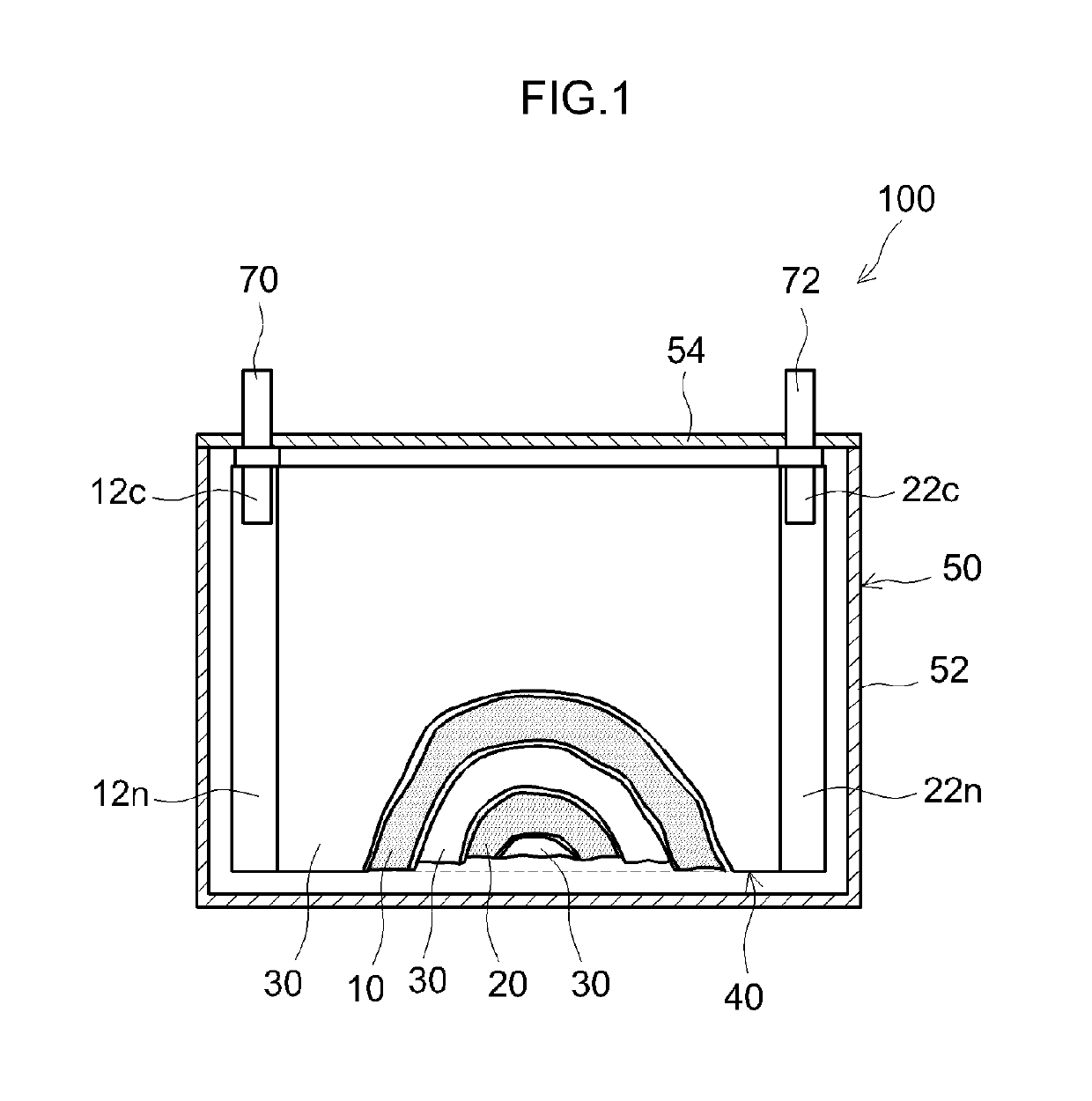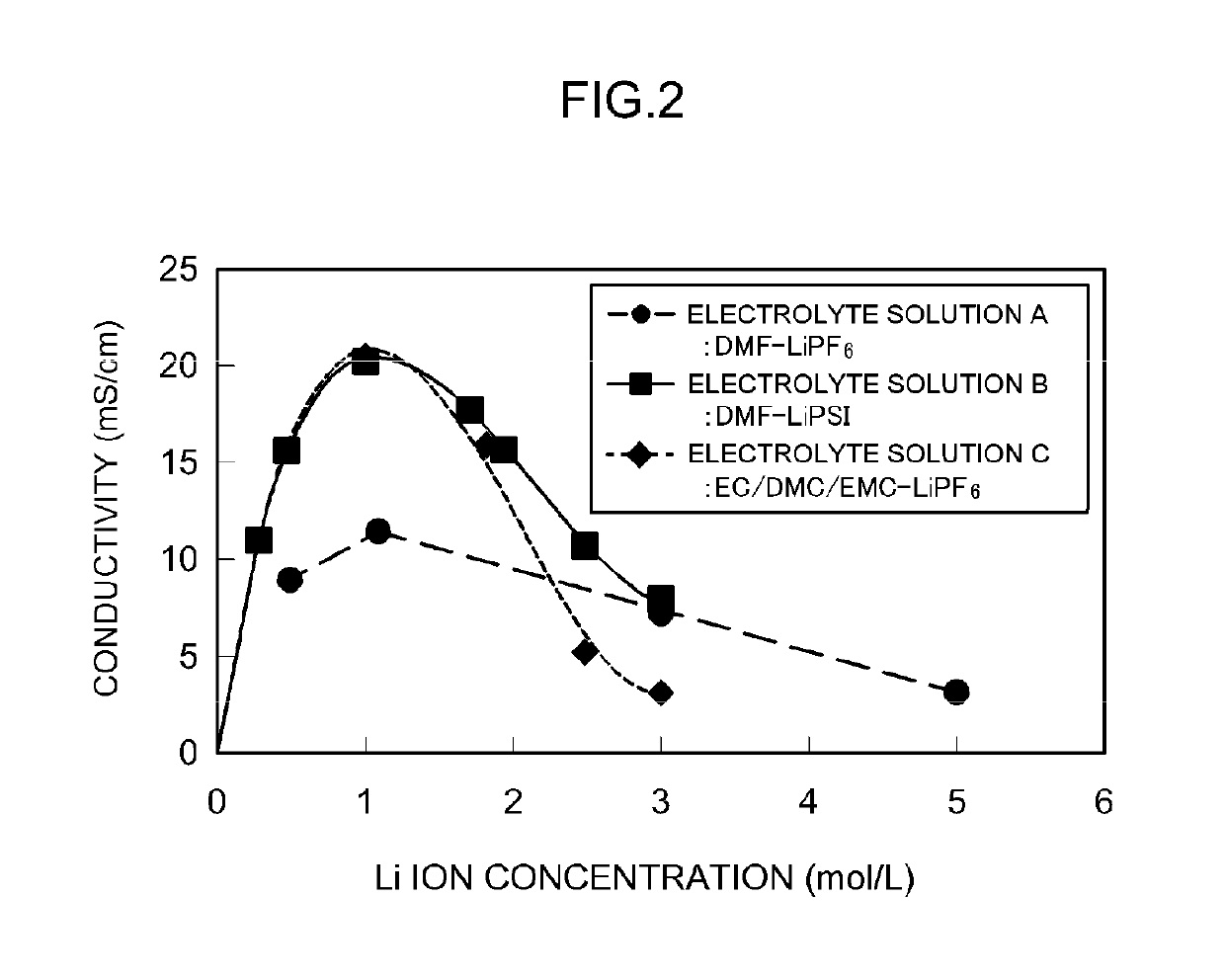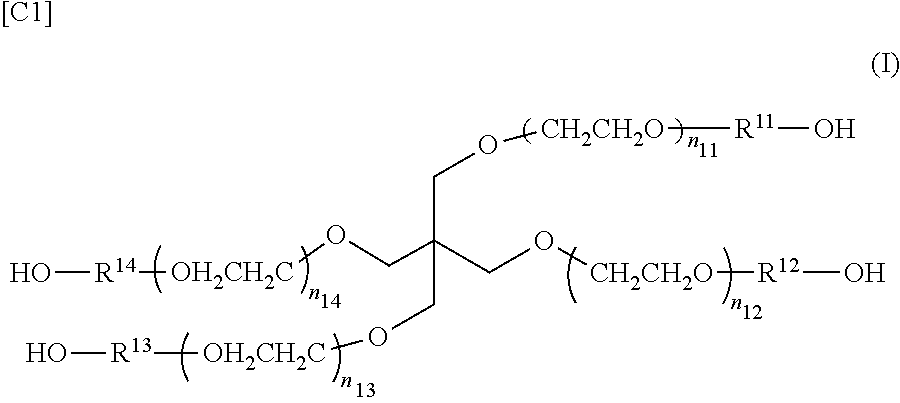Nonaqueous secondary battery
a secondary battery and non-aqueous technology, applied in the direction of wound/folded electrode electrodes, cell components, sustainable manufacturing/processing, etc., can solve the problems of battery performance impairment, failure to maintain etc., to achieve the preservation of the shape of the electrode mixture layer, the integrity of the collector and the electrode mixture layer is enhanced, and the battery resistance can be kept lower.
- Summary
- Abstract
- Description
- Claims
- Application Information
AI Technical Summary
Benefits of technology
Problems solved by technology
Method used
Image
Examples
reference example 1
[0066]Firstly, a lithium-nickel-manganese-cobalt complex oxide as a positive electrode active material, acetylene black as a conductive material and polyvinylidene fluoride (PVdF) as a binder were mixed, and were kneaded while viscosity was adjusted with N-methyl pyrrolidone (NMP), to prepare a positive electrode slurry. The proportion of PVdF with respect to total solids was set to the proportion (3.0 mass %) given in Table 1. The positive electrode slurry was applied onto an aluminum foil (positive electrode collector), was dried, and thereafter the whole was rolled to produce as a result a positive electrode having a positive electrode mixture layer on the positive electrode collector.
[0067]Next, amorphous coated graphite (C) as a negative electrode active material, styrene butadiene rubber (SBR) as a binder and carboxymethyl cellulose (CMC) as a dispersant were mixed, and were kneaded while viscosity was adjusted using deionized water, to prepare a negative electrode slurry. The...
reference example 2
[0071]A lithium ion secondary battery (Reference Example 2) was constructed in the same way as in Reference Example 1, but herein N,N-dimethylformamide (DMF) was used as the nonaqueous solvent in the preparation of the nonaqueous electrolyte solution.
reference example 3
[0072]Herein polytetrafluoroethylene (PTFE) and a copolymer of polyvinylidene fluoride and hexafluoropropylene (PVdF-HFP) were used in the proportions given in Table 1, as the binder in the production of the above positive electrode. Further, SBR and PVdF-HFP were used in the proportions given in Table 1, as the binder, to produce a negative electrode. Otherwise, a lithium ion secondary battery (Reference Example 3) was constructed in the same way as in Reference Example 2.
PUM
| Property | Measurement | Unit |
|---|---|---|
| temperature | aaaaa | aaaaa |
| temperature | aaaaa | aaaaa |
| temperature | aaaaa | aaaaa |
Abstract
Description
Claims
Application Information
 Login to View More
Login to View More - R&D
- Intellectual Property
- Life Sciences
- Materials
- Tech Scout
- Unparalleled Data Quality
- Higher Quality Content
- 60% Fewer Hallucinations
Browse by: Latest US Patents, China's latest patents, Technical Efficacy Thesaurus, Application Domain, Technology Topic, Popular Technical Reports.
© 2025 PatSnap. All rights reserved.Legal|Privacy policy|Modern Slavery Act Transparency Statement|Sitemap|About US| Contact US: help@patsnap.com



